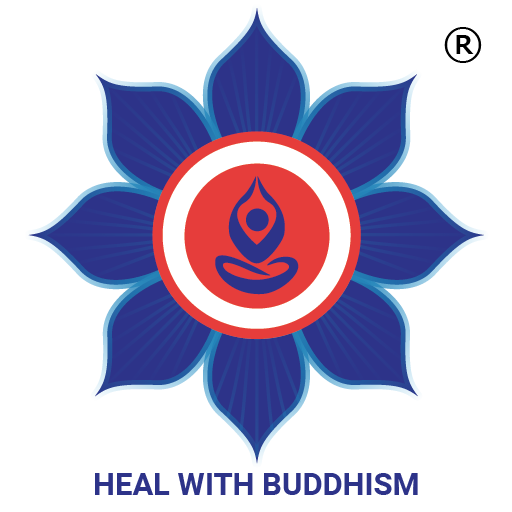Dear readers,
I hope you are not yet exhausted with my use of Pāḷi/ Sanskrit words because it is my intention to introduce you to the original Buddhist teachings, which cannot be usually replaced by a singular English word.
What is the importance of learning “Pali” words for those who wish to practice Buddhist mindfulness?
The most important massage from Lord Buddha the Gautam to his disciples at his death bed was to keep dhamma/ dharma, the theory and the practice of his teachings as their master. Because, dhamma/ dharma is what required to be understood and practiced by each individual in order to achieve the purpose of Buddha’s teachings.
Having said that, one of the biggest challenges faced by modern day Buddhist mindfulness learners around the world including myself is the challenge of understanding the original version of dhamma/ dharma written in either Pali or early Brahmin languages. In fact, as a long-term Buddhist learner, I have found that learning through second-interpretations could cause significant confusion due to misunderstanding or misinterpretation of the original teachings.
What are the common misunderstandings or misinterpretations of Buddha’s teachings?
Mislabelling Buddha’s teachings as a religion or a religious practice comes on the top of this list:
It is well-known that the Lord Buddha the Gautam was born in an era where hundreds of philosophical and spiritual practices dominated Indian subcontinent. However, many came to practice Buddha’s teachings due to the following qualities of dhamma that separated it from other practices:
“Svakkhato Bhagavata Dhammo, Sanditthiko, Akaliko,
Ehipassiko, Opanayiko and Paccattam Veditabbo Vinnuhi”
Svākkhāto: Dhamma is not speculative philosophy, but the “Universal truth” [the fundamental nature of the universe] understood and taught precisely by a supreme intelligent being known as “Sammā Sambuddha” [ the enlighten one]
As I mentioned in my previous blog, “ Introduction to Buddhism: Who is Buddha”, word “Buddha” is derived from the ancient Indian language word “Buddhi” meaning intelligence. In both Hindunism and Jainism, Buddha is considered as “a supreme intelligent being” or “the enlightened one” born in time to time [ different kalpa’s = aeons] to understand and educate others about the reality of the world through Nibbhāna [the supreme state of mind that is liberated from ignorance and greed].
I understand that as modern thinkers influenced by western science, it might be difficult for us to believe or understand the teachings of Buddhism because what Lord Buddha has discovered through his supreme state of mind is beyond what the modern scientists have discovered so far.
Sanditthiko: Anticipated outcomes of dhamma can be practically tested and experienced by any individual who wish to do so regardless of their age, gender or social/ religious/ educational status.
As modern thinkers influenced by western science we may like evidence based information around the benefits of mindfulness prior to practicing it, which we are able to access in the present thanks to the researchers like Dr. Herbert Benson & research institutes like Mind & Life Institute.
However, as Dhammapada verse 160 explains “One indeed is one’s own refuge. No other can bring refuge to another”.
“Attā hi attanō nāthō
kō hi nāthō parō siyā
attanā hi sudanténa
nātham labhati dullabham”
Due to this reason, anyone who wish to bare the fruits of mindfulness need to learn and practice the Dhamma it-self, which provides detailed information not only on how to practice, but also on why it should be practiced.
I kindly invite you to take some time to read Karaniya Mettâ sutta and cultivate Metta [loving-kindness] to practically experience the benefits explained in Mettânisansa Sutta.
Akāliko: The dhamma is applicable to any era and can be practiced by any individual without time boundaries.
Teachings of Buddha is about the universal truth [ the fundamental nature of the universe] that has not and will not change over time.
For an example, suffering that comes with birth, aging, sickness and death has neither changed from our ancestors to us nor will change for future generation.
Ehipassiko: The dhamma welcomes anyone & everyone [regardless of their age, gender or social/ religious/ educational status], who wish to practically examine the outcomes of it’s teachings.
As I mentioned in my previous blog “ Introduction to Mindfulness: lifestyle practice towards health & happiness of all beings” Buddha was a teacher who valued individual’s autonomy. Like modern science, his teachings neither required conversion nor blind faith. Instead, his followers are requested to learn, apply and experience it with wisdom.
Opaneyiko: The dhamma is capable of being entered upon and therefore it is worthy to be followed as part of one’s life.
If you look closely, you will notice that Buddhism is a goal directed personal development program, which encourages individual to experience each moment of her/his life with wisdom while creating a healthy, happy, safe & fair society for themselves and others.
Paccattam veditabbo vinnunhi: The one who follow dhamma will be able to bear the fruits being enlightened through supreme wisdom.
There are many stories about different women, men & children who were liberated by the teachings of Buddha. I would like to share the story of “ Rajjumala, the maid who was at the verge of suicide” & “Sopaka, the boy who was beaten and left alone in the cemetery by his step father” as examples.
Misunderstanding or the misinterpretation of the purpose of dhamma/dharma comes second on the list:
Over the last few centuries, there has been a growing misconception around the purpose of dhamma, especially as a result of Buddhism been labelled as a religious faith exclusive to those who wish to reach the state of Nirvana. On this notion, many including the Buddhist followers has forgotten that Lord Buddha the Gautam spend 45 yrs. of his Buddha-hood creating a Buddhist society, which supports the four pillars of UNESCO sustainable model.
As I mentioned in my blog, “ Introduction to Buddhism: Is Buddhism a religion, a science, a philosophy or a lifestyle?” it not only provided the foundation knowledge for governance, agriculture, irrigation, architecture, engineering, cosmology, arts & literature but also the healthy & harmonious life-style, which altogether supported a healthy, happy, fair and safe society for more than two millenniums.
Stay tuned with us to learn more about the holistic approach of Buddhist mindfulness and it’s value in creating sustainable society in the past, present & future.

